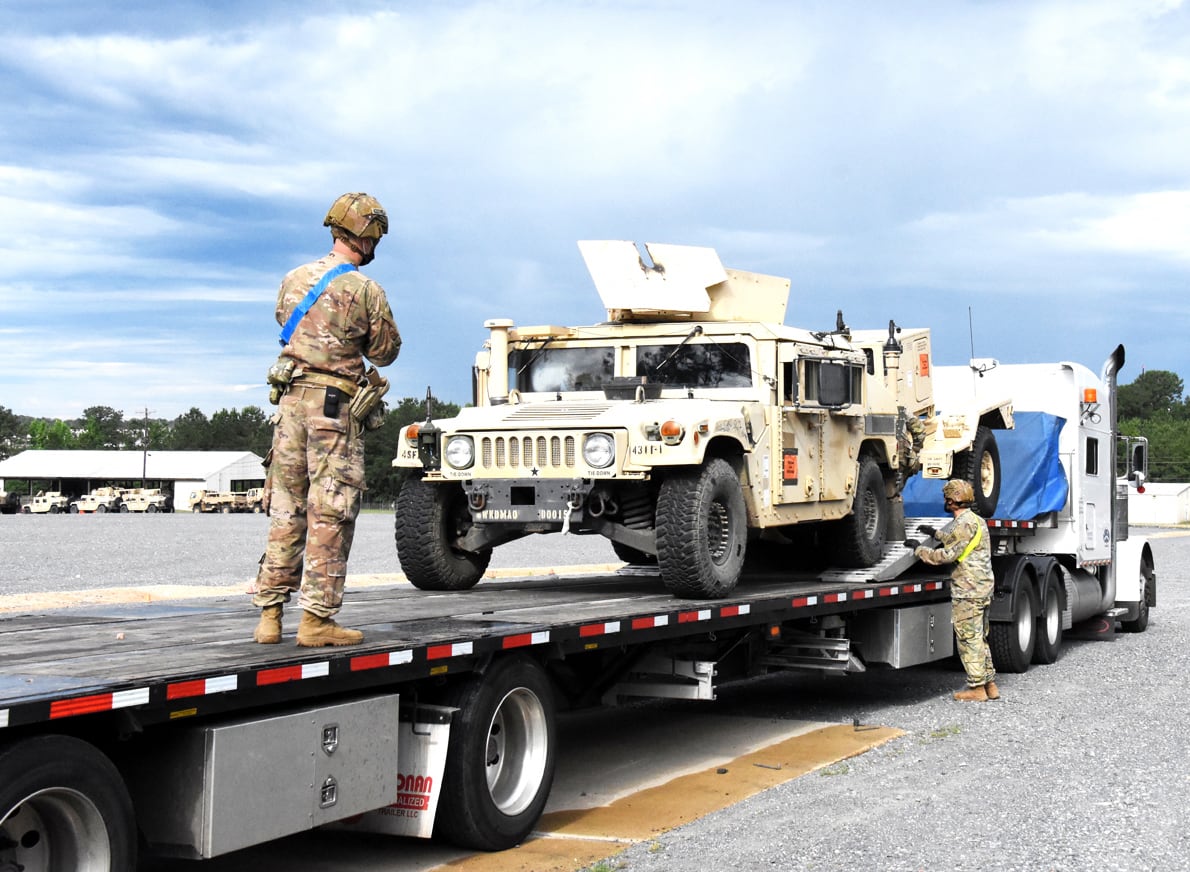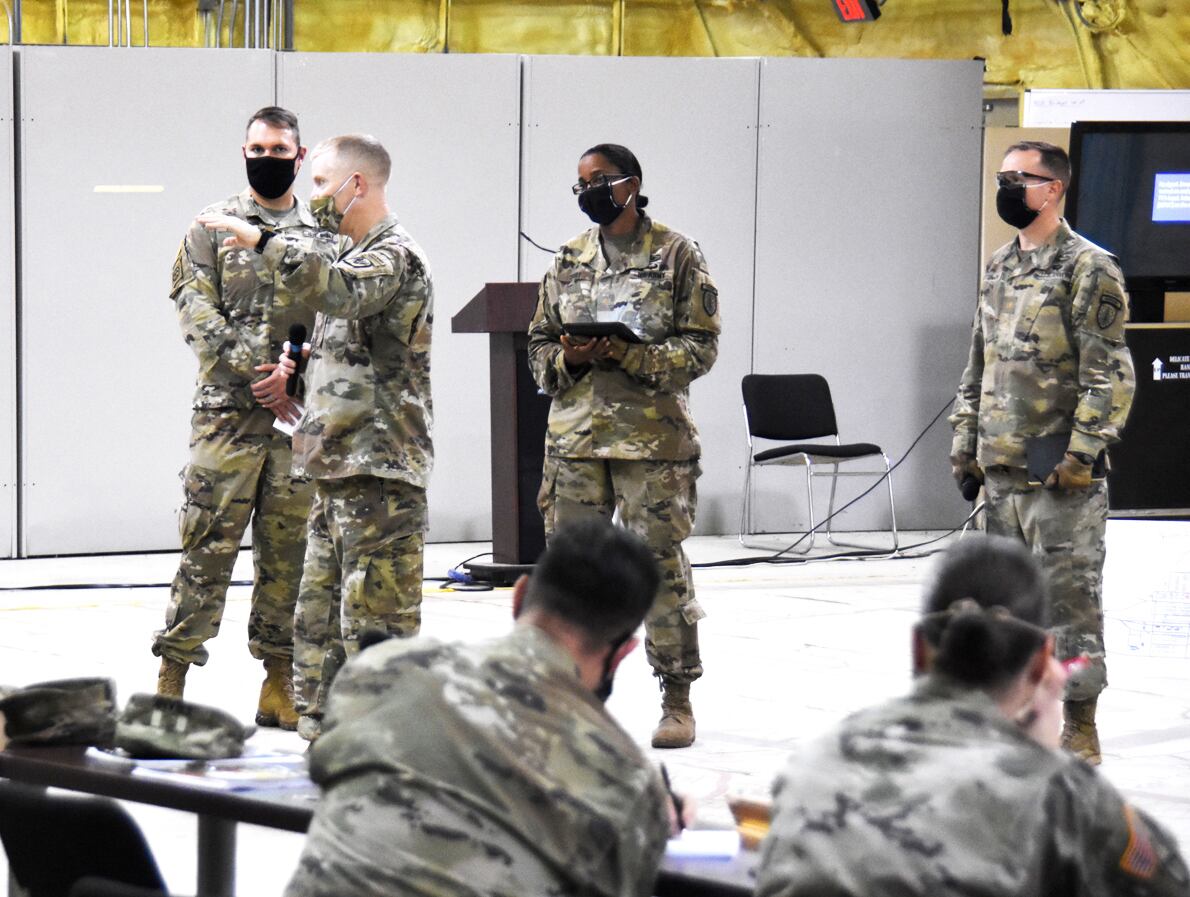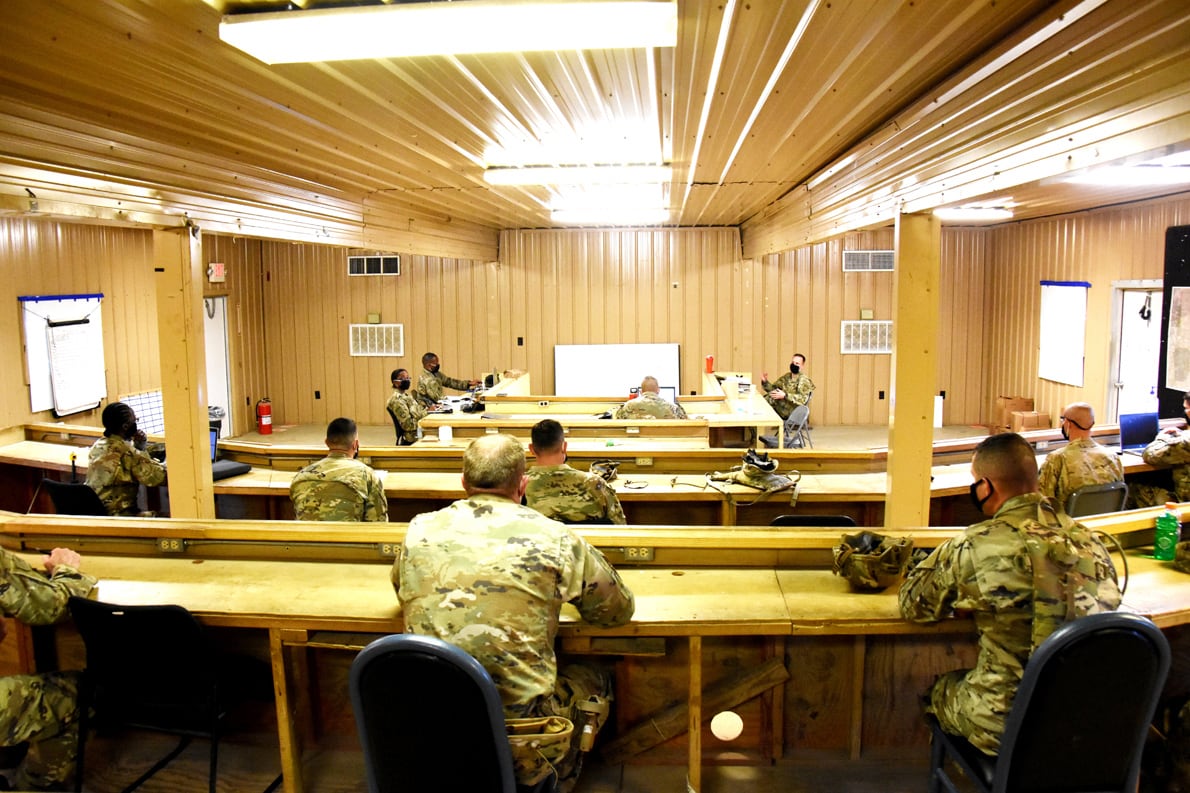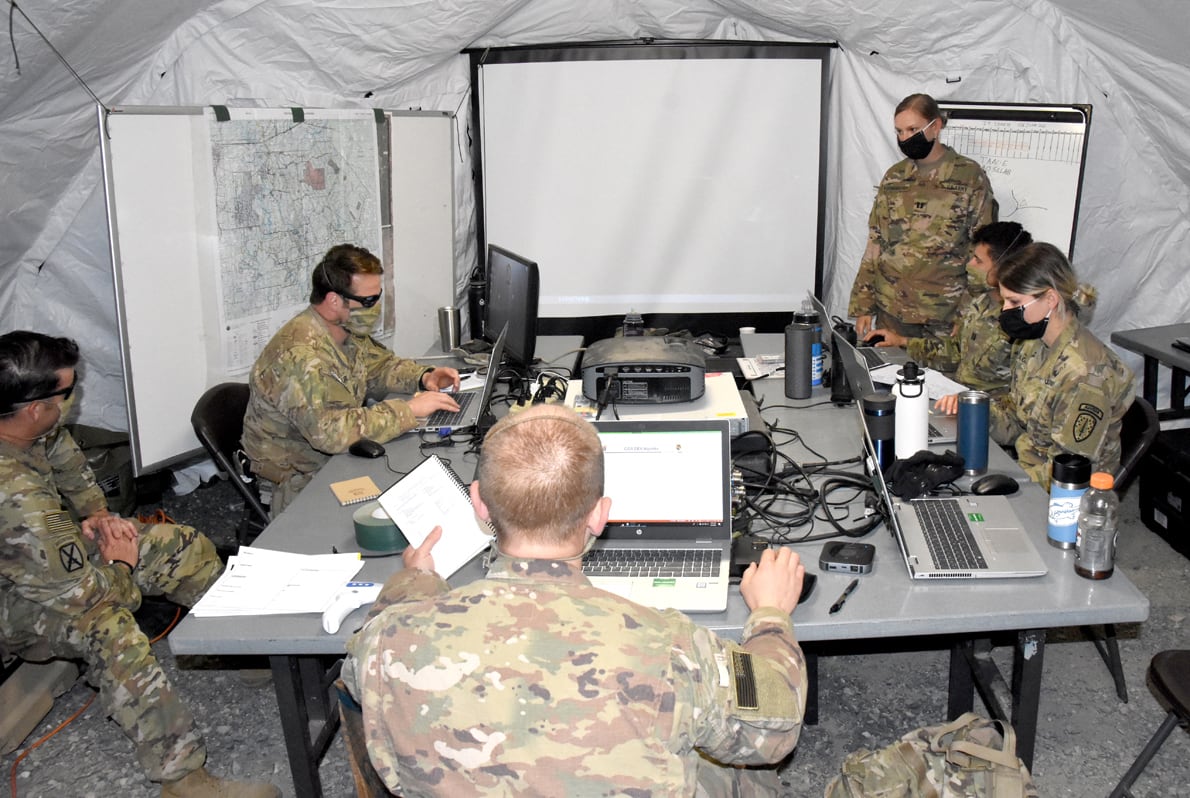Army advisers headed to Afghanistan are currently preparing at the Joint Readiness Training Center on Fort Polk, Louisiana, and their rotation there has the coronavirus pandemic factored in, the commander said.
The 4th Security Force Assistance Brigade, out of Fort Carson, Colorado, arrived in Louisiana this month for what is expected to be the first in a restart to the Army’s combat training center rotations that were paused during the pandemic.
But mitigation measures aren’t the only way advisers will see COVID-19 during the rotation. Planners at JRTC have “maintained a close dialogue” with 3rd SFAB troops currently in Afghanistan, and have built COVID-19 scenarios into the training rotation for 4th SFAB, which will be deploying for the unit’s first time later this summer, said Brig. Gen. Patrick D. Frank, commander of JRTC and Fort Polk.
One such scenario: how do troops deal with a COVID-19 case that hits a key leader or soldier with the skill-set that only they have?
“If that happens to be in their communications section, [they] now have a significant challenge," Frank said in a telephone interview. “How do you take your signal officer or NCO and quarantine them in a fashion with the right equipment that still allows the SFAB [ops center] at the battalion or brigade level to maintain communications across the formation. ... That would be one of the vignettes we would pose.”
Tactical operations centers at the brigade and battalion levels are one focus area for SFAB troops at JRTC, as that is where many will work with their Afghan counterparts. But follow-on rotations to JRTC and other combat training centers later this year will involve brigades with more traditional combat roles, as well as more personnel.

JRTC has a close relationship with the National Training Center at Fort Irwin, California, which will also host a brigade combat team rotation in July.
“We’re sharing our lessons learned with Fort Irwin, and then we’re watching very closely as they move into a larger formation in July than what we have in the SFAB,” said Frank, noting that his team has already compiled an after-action review of how it received the 4th SFAB.
Frank’s post will be accepting about 5,000 troops from the 101st Airborne Division in August, as well, far more than the 1,200 received from the 4th SFAB. That increase will require soldiers to be brought directly into Fort Polk, rather than flying them into Alexandria, Louisiana, as the advisers were.
It also requires them to be moved directly into a tactical environment after their health screening on post, because 5,000 troops can’t maintain the strict social distancing requirements in the sleeping areas established there for the current rotation of 1,200 advisers.
Soldiers from the 4th SFAB arrived via commercial bus and aircraft to the city of Alexandria, about an hour northeast of Fort Polk, and were received at an old airport there known as England Air Force Base.

“They were tested at home station before they arrived here, they were screened and then we tested all the ops group that would interact with the rotational unit,” said Col. Jody Dugai, Fort Polk’s Bayne-Jones Army Community Hospital commander.
Advisers were screened again at the old airport and then were broken off into 12-man company advising teams, briefed on protocols for the new JRTC policies and loaded up to go to the Army post.
“It was a considerable requirement here as you can only move 12 soldiers on a bus,” said Frank. “So several trips back and forth.”
Louisiana’s governor has started a phased approach to opening the state, and Fort Polk has been monitoring the parishes surrounding the post as it brings personnel into the region. Polk itself is maintaining a “protective posture” across post, Frank added.
“We created two saftey bubbles: one for training on North Fort Polk and one for the installation, keeping protective posture across our community,” he said. “The majority of our units and families live on South Fort Polk.”
Military police man traffic control points to create a perimeter around North Fort Polk. Soldiers arriving to that part of the post for JRTC are mostly confined there until they move out to their 14-day training rotation.

Like most Army installations, Fort Polk now has testing devices for COVID-19 on-site, said Dugai. Her medical facilities can turn tests around “in about an hour,” thanks to four new devices there, she added, which will help soldiers who appear to have symptoms but who are negative for COVID-19 to continue training.
Critical COVID-19 patients, though rarer in the normally healthy population of young soldiers, require more medical equipment, like ventilators. But Dugai’s hospital doesn’t have a traditional intensive care unit on-site.
“However, knowing that there was a potential that our network partners, not to mention our regional partners, their hospitals would be at capacity with their ventilators and personnel ... I started training my team with ICU-type skill-sets,” said Dugai.
That training includes ensuring their stock of contingency ventilators were pulled out and prepped if needed. ICU bed parts, to include IV pumps, suction machines and monitors were also set up, Dugai said. Medics, nurses and doctors started training on that equipment and laying it out as part of the post’s preparation for COVID-19 this spring, and not just the JRTC rotations, she added.
The protective protocols JRTC has established for restarting training rotations are “really a micro version of what we already established over the last two months over the installation,” said Frank. “So everyone is entering the force-on-force period here at JRTC with a lot of confidence, a lot of energy and a lot of excitement to begin operations at the brigade collective level here."
Kyle Rempfer was an editor and reporter who has covered combat operations, criminal cases, foreign military assistance and training accidents. Before entering journalism, Kyle served in U.S. Air Force Special Tactics and deployed in 2014 to Paktika Province, Afghanistan, and Baghdad, Iraq.
